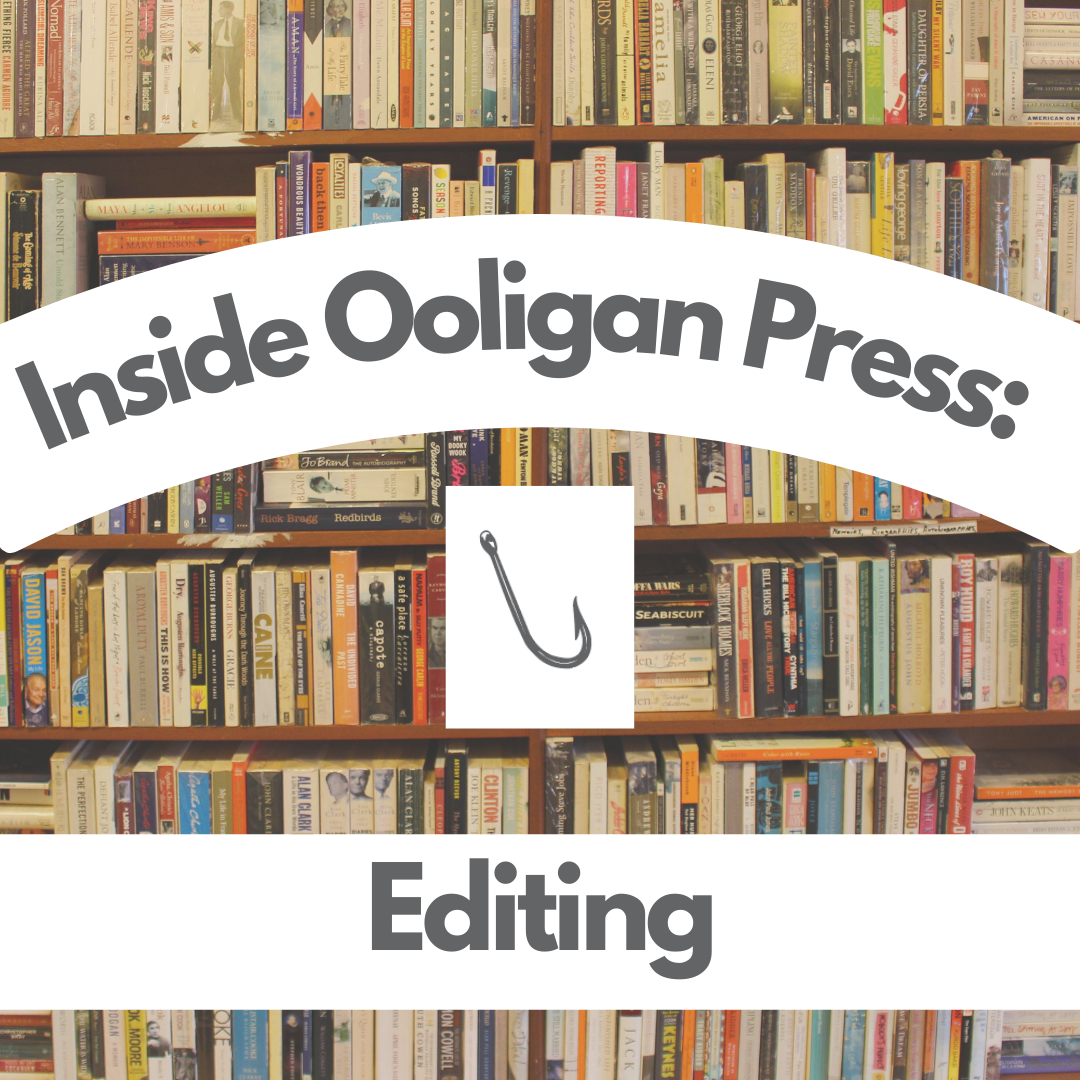Note: This is part of the blog series “Inside Ooligan Press,” about how we take a manuscript from an idea to a professionally published book.
There are many levels of editing that help shape a manuscript into what readers ultimately pull off the shelves of their favorite bookstore or library, but how does each level of editing work to transform a manuscript from the first draft to the final, polished result?
As editors, we create and manage all editorial timelines and guide an author through the publishing process as their manuscript undergoes multiple levels of editing. In addition, an editor’s goal is to help an author strengthen their writing while also maintaining their voice and overall tone of their story. To do this, editors follow guidelines set by the client they are working with, the publishing house they work within, and style guides used across particular industries. Here at Ooligan Press, we utilize our house-made style guide and a style guide created specifically for each manuscript we publish, as well as the Chicago Manual of Style (CMOS) that is broadly used across the publishing industry. These guides encompass standard rules for the treatment of numbers, the use of commas, and the use of other punctuation, as well as citations and endnotes when applicable.
CMOS is the standard style guide used in trade book publishing, but each publishing house may also utilize an internal style guide for specific editorial decisions. For example, at Ooligan, our style guide has a specific section for inclusivity that we reference to ensure our publications are accessible to readers and use inclusive language. We also create style guides for each manuscript to address book-specific editing choices such as the spelling of unique names and phrases, often seen in fantasy or non-fiction books.
These style guides are utilized throughout the four main editing stages: developmental editing, copyediting, line editing, and proofreading. The first round of editing that a manuscript goes through is developmental editing, also called a DE. This round is undertaken by our Acquisitions Department, who work with authors to complete big picture editing. Rather than correcting spelling errors or comma splices at this stage, a DE looks at the manuscript from the top down, addressing plot holes, character development, and plot points that move the story forward.
After Acquisitions receives these big picture edits back from the author, the manuscript is handed off to our Managing Editor to guide the manuscript through more specific edits. Manuscripts we acquire generally go through two rounds of copyediting, one heavy copyedit and one light-to-medium copyedit, depending on what each manuscript needs. These rounds of edits look for spelling mistakes, errors in punctuation, and smaller, more specific story edits as needed. Story edits are marked in comments as queries to the author to point them in the right direction if there is any confusion within the manuscript. For these types of queries, our editors explain why they are bringing something to the author’s attention and provide at least two suggestions that would provide more clarity. Like during a DE, these suggestions are up to the discretion of the author and aim to maintain their voice. Alongside these suggestions and correcting punctuation and spelling, we also strive to correct grammatical errors and sentence structure, a process called line editing. Here we look at each sentence and its role within the manuscript. Awkward wording is flagged and suggestions are provided to help the author rework unclear sentences.
Following these copyedits, the manuscript is sent to the Design Department to transform the Word Document into a designed PDF that will ultimately turn into the final published book. But before this designed interior can be sent to the printers, it must undergo one last round of editing to ensure all errors are corrected. We call this round a print proofread, in which editors compare the designed interior to the most recently edited Word Document. Here we make sure that there are no missing paragraphs or sections, all punctuation and italics are correct, and no stray code made its way into the manuscript during the design process. Once the proofread is complete, the book is sent to the printers and the final book is produced. In a similar fashion to print proofreads, we also perform ebook proofreads to ensure a digital copy of the manuscript is formatted correctly and no errors were introduced during coding.
While these are the editorial steps we undertake at Ooligan, each publishing house may differ from these steps depending on their department structure. No editing schedule is the end-all be-all for editing, but a good editor will work directly with an author to maintain their vision for their manuscript. The most important job an editor undertakes is helping an author create the best version of their manuscript and strengthen their writing while maintaining their unique voice.

